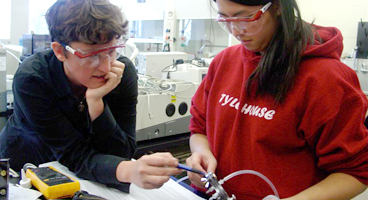Measurements of Ear-Canal Cross-Sectional Areas From Live Human Ears with Implications for Wideband Acoustic Immittance Measurements
This document has been relocated to https://scholarworks.smith.edu/egr_facpubs/79/
Abstract
Wideband acoustic immittance (WAI) measures are noninvasive diagnostic measurements that require an estimate of the ear canal's area at the measurement location. Yet, physical measurements of the area at WAI probe locations are lacking. Methods to measure ear-canal areas from silicone molds were developed and applied to 169 subjects, ages 18-75 years. The average areas at the canal's first bend and at 12 mm insertion depth, which are likely WAI probe locations, were 63.4 ± 13.5 and 61.6 ± 13.5 mm 2, respectively. These areas are substantially larger than those assumed by current FDA-approved WAI measurement devices as well as areas estimated with acoustical methods or measured on cadaver ears. Left and right ears from the same subject had similar areas. Sex, height, and weight were not significant factors in predicting area. Age cohort was a significant predictor of area, with area increasing with decade of life. A subset of areas from the youngest female subjects did not show an effect of race on area (White or Chinese). Areas were also measured as a function of insertion depth of 4.8-13.2 mm from the canal entrance; area was largest closest to the canal entrance and systematically decreased with insertion depth.

